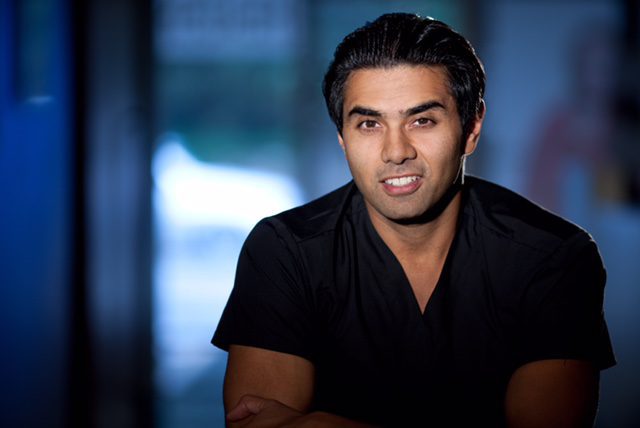
By age 60, 1 in 3 women have had a hysterectomy. The most common reason is uterine fibroids. African American women are three times more likely to develop uterine fibroids, followed by Hispanic women and Asian women.
Uterine fibroids are noncancerous tumors located in and around the uterus. July is Fibroids Awareness Month and it is vital that women are aware of risk factors, recognize and know the symptoms, prevention methods, and treatment options.
Board certified vascular and interventional radiologist Neel Patel is on a mission to educate, inform and treat women who are interested in the nonsurgical treatment for fibroids. The Atlanta area native specializes in uterine fibroid embolization (UFE) at the Minimally Invasive Center of Atlanta.
Fibroids tend to become more symptomatic in women in their 30s and 40s and become less common as women approach menopause. When most women hear “fibroids” they hear “surgery.” This is no longer the case.
“The treatment of fibroids in the past has been surgical whether they do hysterectomy or myomectomy [but] with my procedure, it is less invasive. By using technology, we are able to treat patients in a minimally invasive way,” Patel said.
Despite being pioneered in mid-1990s and covered by all insurance companies, UFE remains an unknown treatment option for countless women with uterine fibroids in 2017. Instead, many women have unnecessary surgery to treat their fibroids or worse, continue to suffer in silence.
Women suffer in silence and experience debilitating symptoms during their monthly cycles due to uterine fibroids. Symptoms include heavy menstrual bleeding, anemia, blood clots, irregular blood levels, frequent urination and severe pelvic pain. In extreme cases, women must receive blood transfusions for the excessive loss of blood.
“It’s more about just getting the word out there,” Patel said when discussing the high numbers of women with fibroids going untreated. “Many people go see their gynecologist when they experience heavy bleeding. My specialty, interventional radiology, is not well known. Sometimes the patients may have unnecessary hysterectomies. Sometimes it is appropriate to do the surgical procedures but just getting the word out there that there is another option [is important]. It’s all about information and making your own decisions.”
While UFE is less invasive, safer and has a much faster recovery time than surgical procedures, for some women surgery is necessary.
“Initially, we diagnose fibroids with an ultrasound,” Patel said. “Different things fall into place to see who’s a procedural candidate. Usually, I get an MRI before the procedure so that kind of helps out the planning also.”
For those eligible for UFE treatment, the procedure can be performed through the groin artery or Patel’s preferred method, the wrist artery. Advantages to UFE include a five to seven day recovery period, no hospital stay, no surgery, an hour or less procedure time and going home with a Band-Aid the same day.
“The risks are less than one percent usually. It’s less risky than surgery. It’s a good alternative. Sometimes the fibroids may get a different blood supply so a few patients may need either a second procedure or different procedure. But it’s about a 95 percent success rate of treating symptoms,” Patel said.
In addition to living pain-free lives post UFE, several of his patients have become pregnant and are new mothers, often an obstacle for women affected by uterine fibroids. Patel keeps in close contact with his UFE patients and reports that his patients are fibroid-free.












